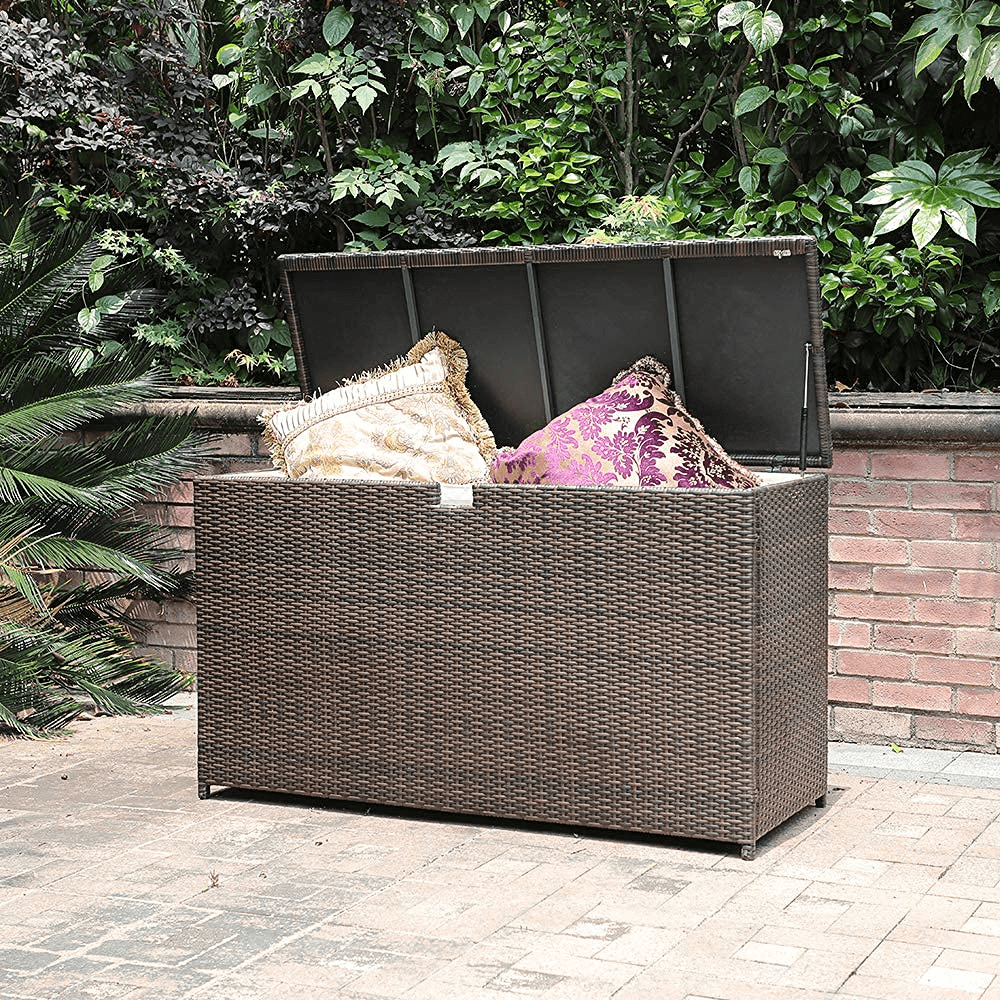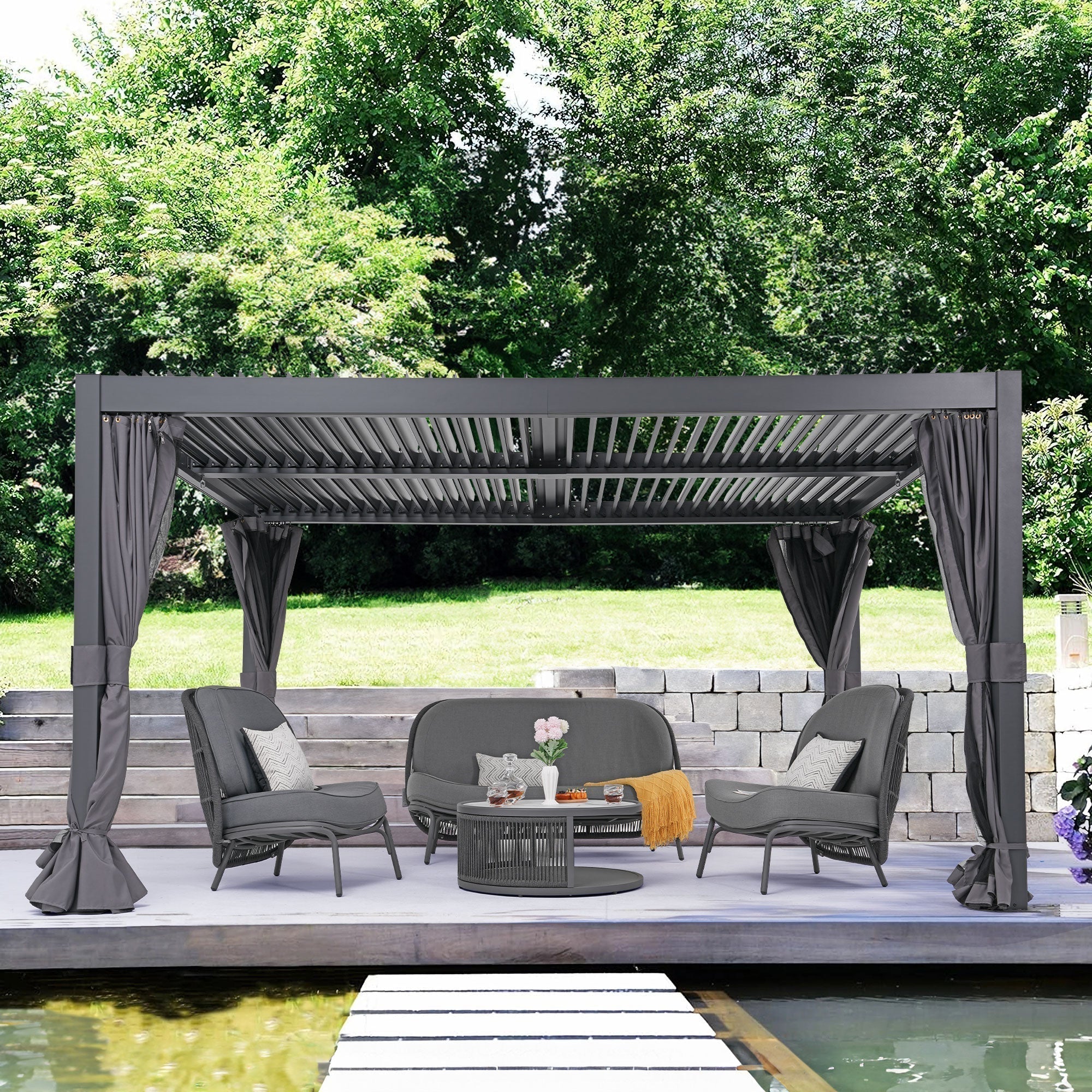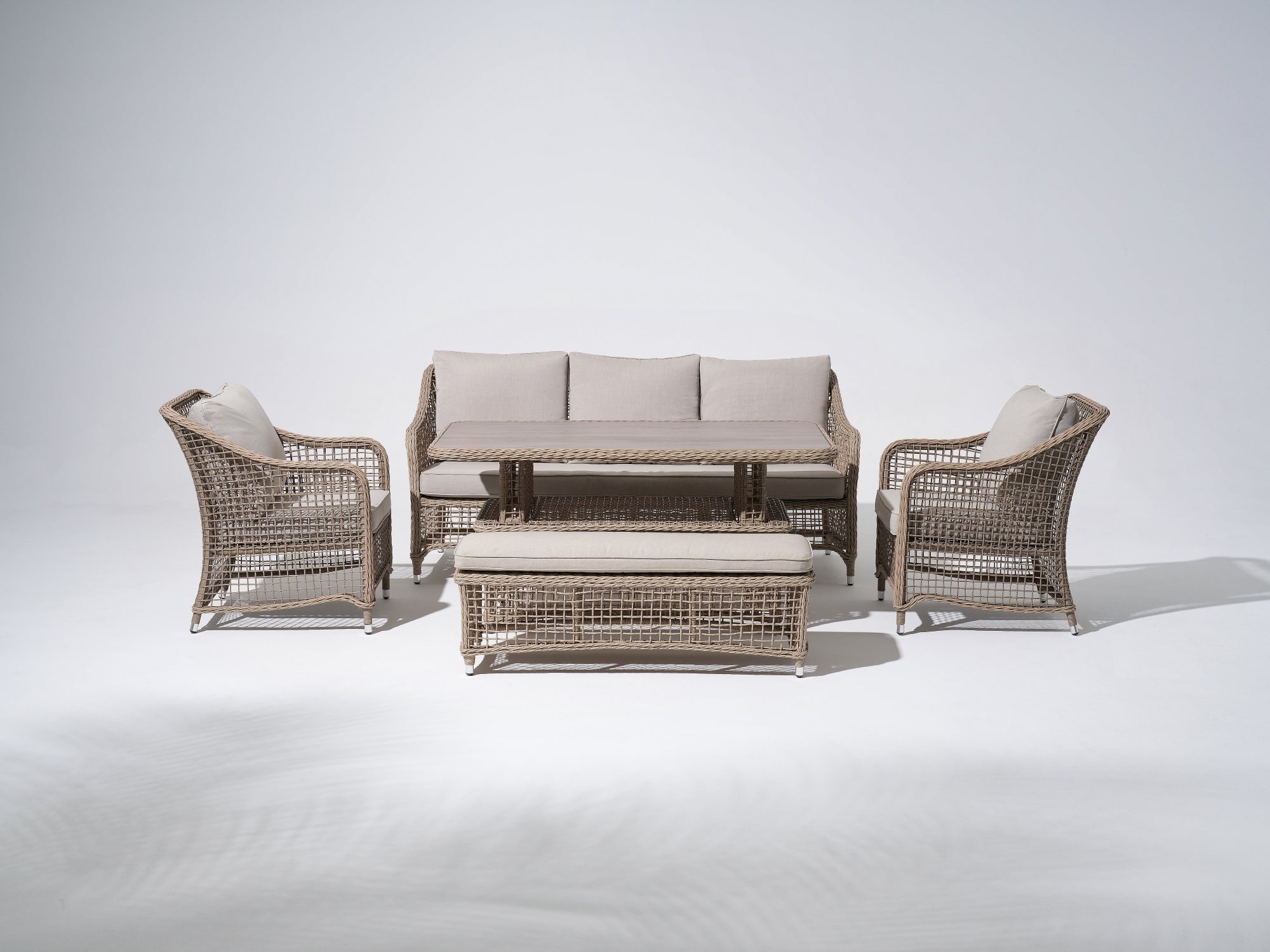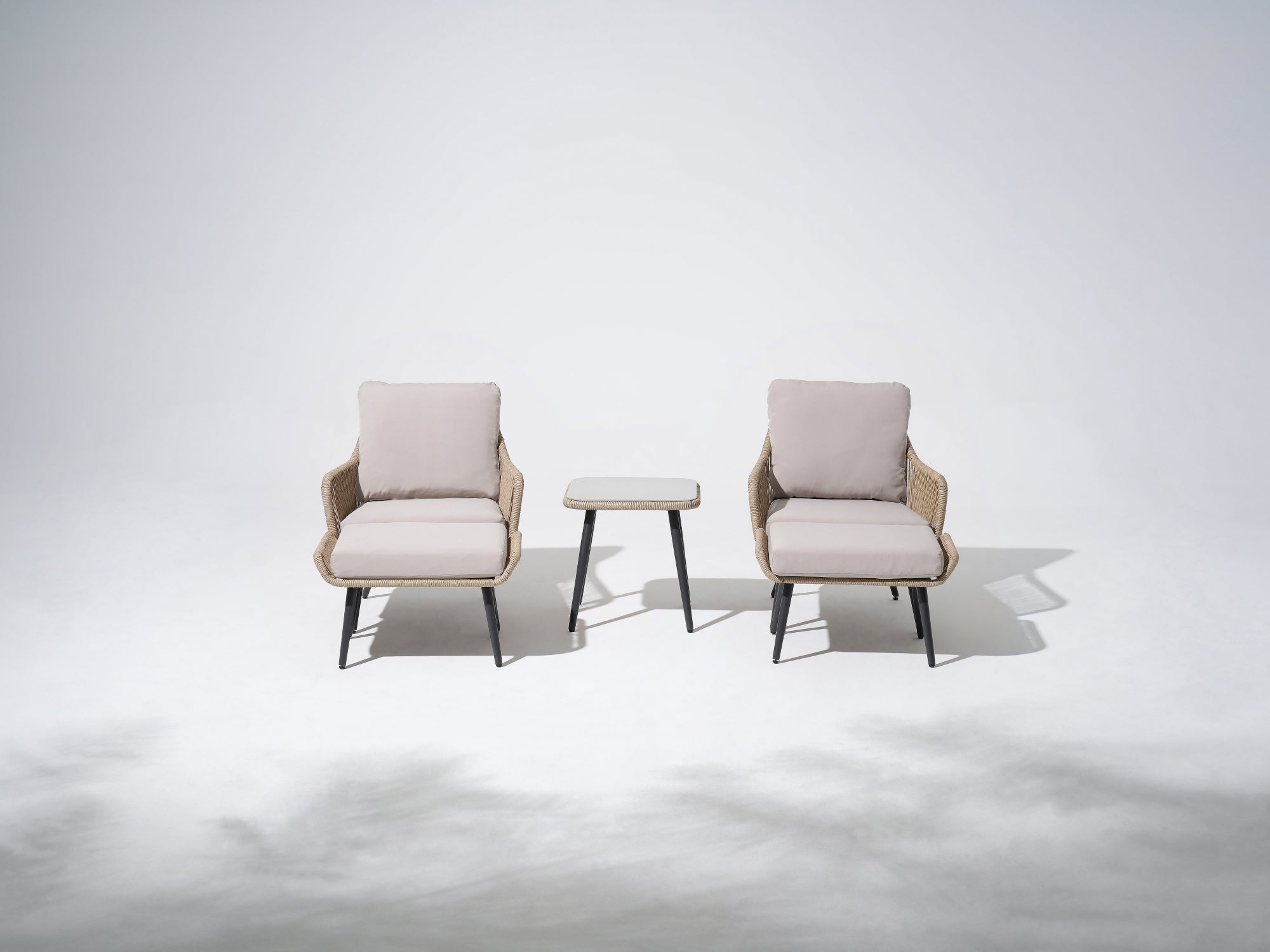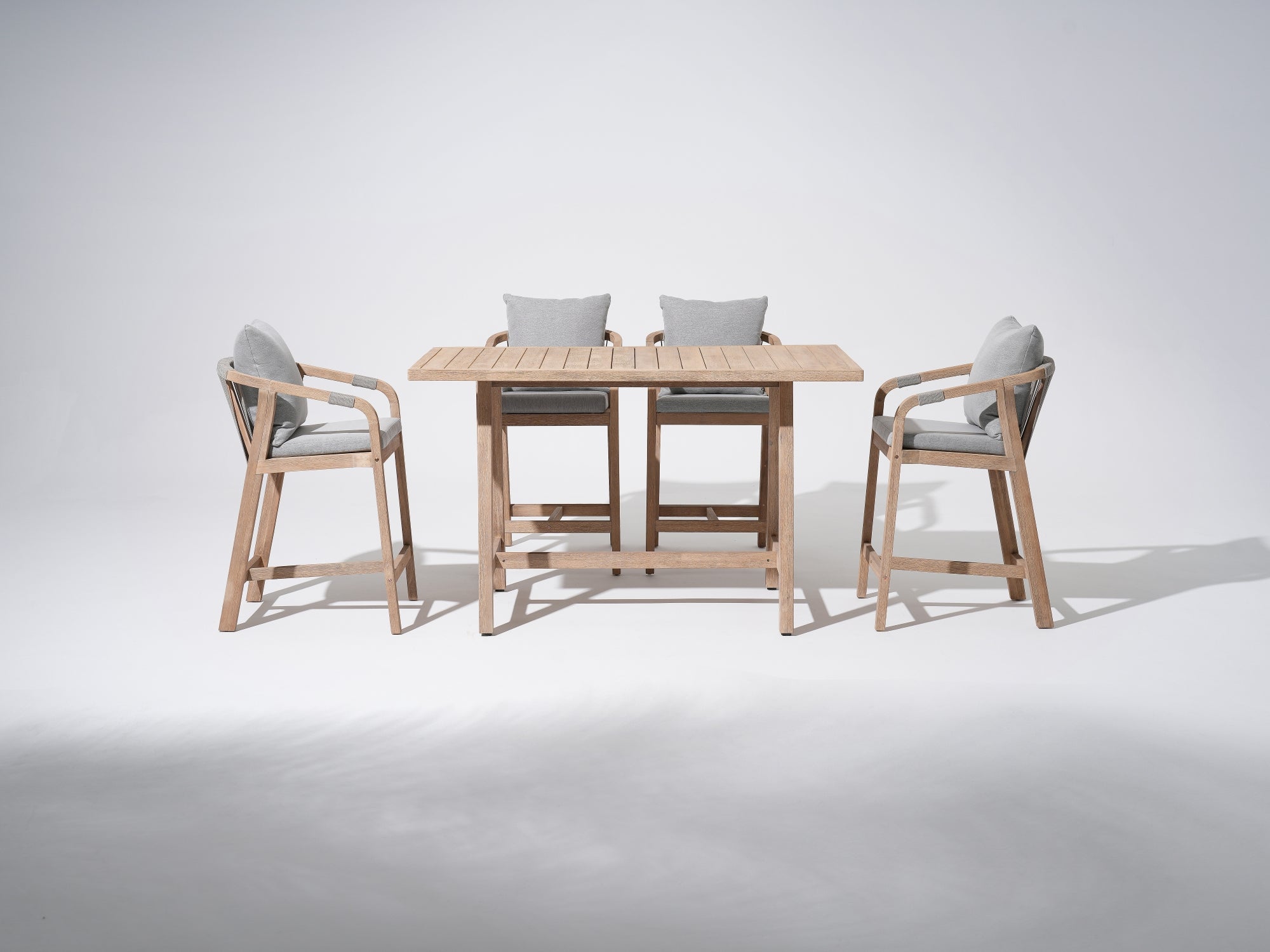Gone on a shopping spree recently and caught off guard by the exorbitant prices of rattan furniture? Well, it's time to realize that rattan furniture sells at hefty prices.
It probably sparked your inquisitive nature, wondering what makes it this expensive. The fact that most rattan furniture is crafted for the outdoors warrants it to go through processes to meet high durability.
That together with the material in use alongside other factors, justifies the high costs.
But we won't be surface-level as we've discussed these factors in depth. Next time you see the price tag, you'll concur it's worth it.

Natural Material
Most rattan furniture, ranging from dining sets and console tables to sofas, is crafted from natural rattan—a type of palm vine that grows by climbing other plants in the jungle, using its long thorns to wind around supports as it reaches for sunlight. Unlike rattan, wicker refers to a weaving style or technique, not a material itself. While wicker involves interlacing natural fibers (such as rattan, bamboo, or reeds) or synthetic materials into patterns, rattan serves as the natural material commonly used in this craftsmanship. To explore more about the distinctions between wicker and rattan, visit this link.
Rattan material has recently been scarce due to overharvesting over the years. It grows in specific tropical jungle settings in Indonesia, the Philippines, and Southeast Asia. These rainforests are few and scattered over the planet, contributing to the limited availability of natural rattan.
There is a high chance the rattan furniture display you're seeing in the furniture shops in your locality came from afar. If not, the local manufacturer sourced the material from thousands away; it could be a different continent. Such circumstances incur heavy transportation costs, which are highly likely to raise the furniture prices.
Additionally, before the material reaches the furniture manufacturer, it undergoes rigorous preparation. This process makes it ready for use in the cities and importing countries. The green rattan is thorny and contains sap and sometimes insects that require removal.
So, the harvester starts by separating the rattan from the supporting plant and cuts it down. Then proceeds to peel the back and remove the thorns, attaining a smooth surface. Finally, the pulpwood is treated and dried until it becomes rustic yellow-brown.
Overall, that needs extensive labor and time, adding up to the high rattan costs. The preparation operations, from start to finish, definitely involve money. At this point, you can tell that supply scarcity, preparation, and importation expenses play a huge part in the soaring prices of rattan furniture.
The Types of Rattan
1. Natural Rattan
2. PE Rattan (Polyethylene Rattan)
3. PVC Rattan (Polyvinyl Chloride Rattan)
4. Reconstituted Rattan
5. Vintage/Antique Rattan
Key Differences Between Natural and Synthetic Rattan

Handcrafted Quality
Next in line is the skilled craftsmanship put in place in pursuit of excellent quality. It's no secret that rattan crafts possess a unique traditional craftsmanship, which is made by hand. Usually, the skill is passed down to generations in the rattan-rooted communities, making it a one-of-a-kind art and skill.
So, rattan furniture production demands manufacturers to outsource specific, talented artisans. And by the look of things, few people may have the skill, supported by the fact that the production is labor-intensive.
The hollow rattan poles go through vigorous bending and weaving movements to pick the desired shape. Creating these intricate pieces of furniture calls for loads of patience and attention to detail.
For this reason, the manual work involved in making the rattan products consumes a copious amount of time. The time-consuming and laborious nature pumps the price of the rattan furniture.
Also, the eccentric artisanal techniques influence the price dynamics. You've probably bumped into rattan pieces of various designs that showcase the creativity that comes with the use of rattan on furniture.
The more complex and intriguing the rattan furniture is, the higher the purchasing costs. It definitely means more time and energy was put into the work to achieve sophistication.

Durability and Longevity
For ages, rattan furniture has been the realm of luxurious outdoor living. Unlike most furniture in the marketplace, rattan material is lightweight yet sturdy and durable, suitable for patios and backyards. Due to its durability, it can last for years without spoiling and won't keep you on toes caring for it.
Rattan is treated during its preparation, giving it a waterproof finish. As such, it's a popular outdoor choice since it can withstand harsh weather in the spring, summer, or on chilly days.
It's also resistant to yellowing by UV rays from the sun. Therefore, it rarely discolors, rots, or turns damaged but under proper maintenance, even though it requires minimal maintenance.
This level of longevity shows it's a sustainable and cost-friendly option in the long term. A far-sighted person considers the value of longevity and overlooks the pricey rates as long as they're reasonably priced.
It's wiser to invest in a few rattan pieces instead of cheaper options that will be dilapidated in no time. As the user, you enjoy the comfort offered by the extended lifespan of the rattan products.
This validates the costly nature of rattan furniture. You pay not only for the stylish looks but also for the unforeseen durability and longevity you'll appreciate much later.

Design Sophistication and Aesthetics
Given that the rattan vines are flexible, they allow for versatility in color and design. Rattan furniture is often considered traditional furniture, constantly oozing vintage and a touch of class and elegance.
Rattan, in general, possesses natural rustic beauty that easily blends with the indoors or outdoors in any home setting. Place it in the garden; it will match the organic, green environment.
Choose to position the pretty pieces in your living room, and you will also achieve timeless beauty. Usually, the more aesthetic and appealing the rattan furniture, the more expensive it will be.
Then, it existed even in your great-grandparents' era. The history of rattan crafts spans thousands of years, going far back in time.
Over time, the art and craftsmanship behind wicker furniture have evolved significantly, giving rise to innovative and eye-catching designs. These creations vary in complexity, depending on the weaving techniques and artisan skills involved. Each piece is uniquely crafted—the more intricate and creative the design, the more exclusive it becomes.
If you're curious about the difference between rattan and wicker outdoor furniture, check out this detailed guide: Rattan or Wicker Outdoor Furniture, What’s The Difference?.
You also find that each rattan item has a variety of shapes and user capacity. For instance, how one sofa looks is different from another sofa made from the same rattan material. The cost is also influenced by the type of polish and finish on the piece.
If you like visitors and being a host to people, you'll opt for rattan furniture with a huge seating capacity. All these customization possibilities contribute to the overall price of a particular piece of rattan furniture.

Branding and Reputation
If a rattan furniture brand anchors its esteem and service on quality, it receives a prestigious reputation. With a strong reputation in the market, customers find the brand's product worth buying and not buying elsewhere.
The buyer finds it hard to deflect to another brand because they wholly trust this one brand. Even if the rattan furniture seller raises the prices, consumers will still willingly pay more without feeling a pinch. So, the manufacturer sets their prices high, knowing they face no competition and people can go to any depth to own their products.
Plus, rattan furniture is associated with luxury and high-end markets. People attach owning rattan furniture to the financially-abled class, which also augments the price surges.
This perception of rattan brands tends to affect the affordability of middle-class consumers while the sellers make a kill. Either way, you might purchase because you're sure of premium quality and the brand's high reputation.

Market Factors
First, the supply and demand for rattan furniture significantly affect the cost of rattan furniture in the market. When people begin to gravitate towards buying rattan furniture, its demand increases. And when there's a rise in demand, the cost of the raw rattan goes up as it creates a scarcity of supplies.
Also, global economic conditions like geopolitical events and currency fluctuations heavily influence prices. You may find that the countries exporting the raw material face political unrest, pandemics, or civil war.
Inter-country trade cannot run as smoothly as before. Hence, it cuts down or bars imports into your country, causing shortages and price hikes.
It could also be that the import and export tariffs have been inflated. Or strict changes have been made to the trade policies in the exporting or importing countries. These are likely to raise the prices of imported raw rattan products, which further escalate the rattan furniture prices.
Lastly, the pricing strategies adopted by the manufacturers and retailers have a hand in the expensiveness of rattan pieces. Before the product reaches the consumer, the parties concerned may consider business expenses and competitor prices to model their prices.

Wrapping Up
Rattan furniture is chic and stylish in its own special, contemporary way. Now you're aware it's expensive because of not only aesthetics but also durability, handcrafted quality, market factors, and branding.
When purchasing your rattan pieces, the purchase will be worth the spend. Getting value for your money is paramount, which is Jardina's core mission to its esteemed customers.
 Although rattan furniture can be expensive, at Jardina, we ensure that everyone can afford high-quality wicker outdoor furniture. From sofas, tables, and chairs to dining sets, we have it all—and we back it up with a 5-year warranty. Check out our extensive collection of rattan outdoor furniture, and feel free to contact our customer service team for any inquiries.
Although rattan furniture can be expensive, at Jardina, we ensure that everyone can afford high-quality wicker outdoor furniture. From sofas, tables, and chairs to dining sets, we have it all—and we back it up with a 5-year warranty. Check out our extensive collection of rattan outdoor furniture, and feel free to contact our customer service team for any inquiries.



